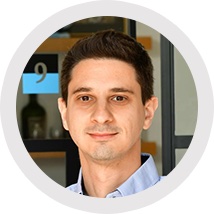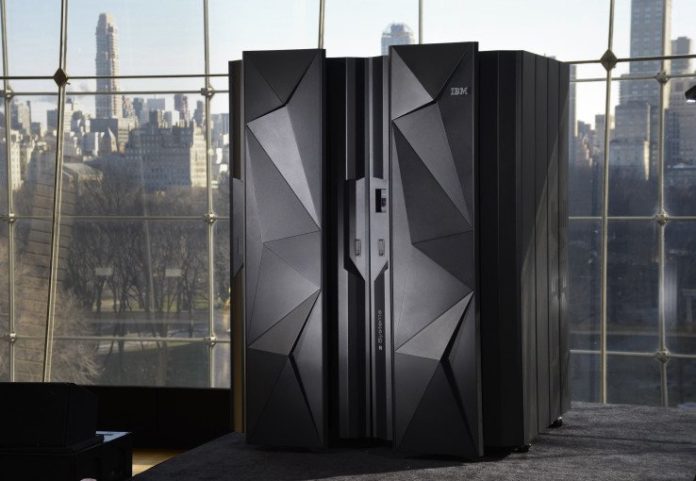“We love mainframe and we want to make it better,” says Model9 co-founder and CEO Gil Peleg.
He wants to demonstrate his love by killing off mainframe Virtual Tape Libraries (VTLs) with a software explosive to blow them up.
The mainframe market includes the largest companies in the world. It is a worthwhile market niche.
Mainframes have traditionally used tape drives and libraries for backup and longer term storage. These have largely been supplanted by disk arrays controlled by software presenting a virtual tape library interface to mainframe applications. These VTLs are much faster than tape drives and libraries at both writing and retrieving data.
However, in the x86 server world VTLs have in their turn been supplanted by deduplicating to-disk arrays acting as backup targets, by object storage arrays and by the public cloud offering backup and archival storage based on object technology, such as Amazon’s S3 and Glacier.
Model9 saw this and reckons it can bring object storage goodness, on-premises and in the cloud, to mainframes making their backup and allied operations less expensive, more scalable and convenient and with no vendor lock-in.
Its technology connects the mainframe directly over TCP/IP to any network-attached storage and enables the supplementing or complete elimination of the need for virtual tape libraries and physical tapes.

The product is called Model9 Backup and Recovery for z/OS.
Since then it has developed its software. Peleg tells us; “Model9 is a shipping product, with customers running in production and customers who have totally eliminated IBM tape hardware and replaced IBM and CA backup software with our solution.”
It supports the following targets:
- Cloud: Amazon S3, Glacier, Azure, Google Cloud and IBM Cloud,
- Object: Hitachi Content Platform (HCP), IBM Cloud Object Storage, EMC Elastic Cloud Storage, NetApp StorageGRID and Microsoft Azure Stack,
- Immutable: Amazon Vault Lock, Hitachi HCP, NetApp StorageGRID,
- Traditional: NAS, SAN, DASD (Direct Access Storage Drive).
It co-exists with:
- Legacy Backup: IBM DFHSM, CA-DISK and FDR/ABR
- Tape Management: IBM RMM, CA-1, CA-TLMS, BMC Control-M/Tape
- Virtual Tape Software: IBM VTFM, CA-VTape
- Security Software: RACF, CA-TSS, CA-ACF2
This is a heck of a lot of software functionality to develop in two years or so, Particularly in the assembler-driven world of mainframe software development.
The software consists of a Backup Agent on z/OS and a Management Server on Linux or z/Linux as shown in the diagram below;

Java vs. Assembler
The Israeli company was started in 2016 by four mainframe people: CEO Gil Peleg, CMO Motti Tal, VP Busness development Adi Pundak-Mintz, and departed CTO Yuval Kashtan.
It has had two smallish funding rounds; a pre-seed one and a seed round, both in 2017, and with the amounts undisclosed.
How come Model9 has been able to do all this in a comparatively short time?
Peleg points to three key differentiators over other Mainframe vendors that “allow us to move very fast.”
“The mainframe side of the product is developed in Java, unlike any other infrastructure solution in the mainframe world that are developed in Assembler. Our patented technology is all about how to perform low-level mainframe I/O operations and invoke system services from Java. So developing the majority of the product in Java instead of Assembler allows us to use standard tools and practices and develop high quality software much faster than the norm in this market.”
Secondly: “We support S3 directly from z/OS which enables us to quickly develop and make adjustments between the different cloud storage player offerings and provide support for AWS, Azure, Google Cloud and IBM Cloud. In 2016 we also participated in IBM’s cloud accelerator called IBM AlphaZone and were the first company to connect the IBM mainframe to the IBM Cloud. We also certified with the major NAS/SAN players such as NetApp and Infinidat.”
And the third factor is this; “Our R&D team is composed of highly skilled mainframe software engineers, all under 40 with 15 years of experience in mainframe, storage, cyber security and enterprise software development. All of our R&D team are guys who started their professional career as mainframe engineers in the Israeli Army’s computer centre, at one of its elite computing units. This young and agile team with startup mentality enables us to develop very fast in compare to other companies our market.”








